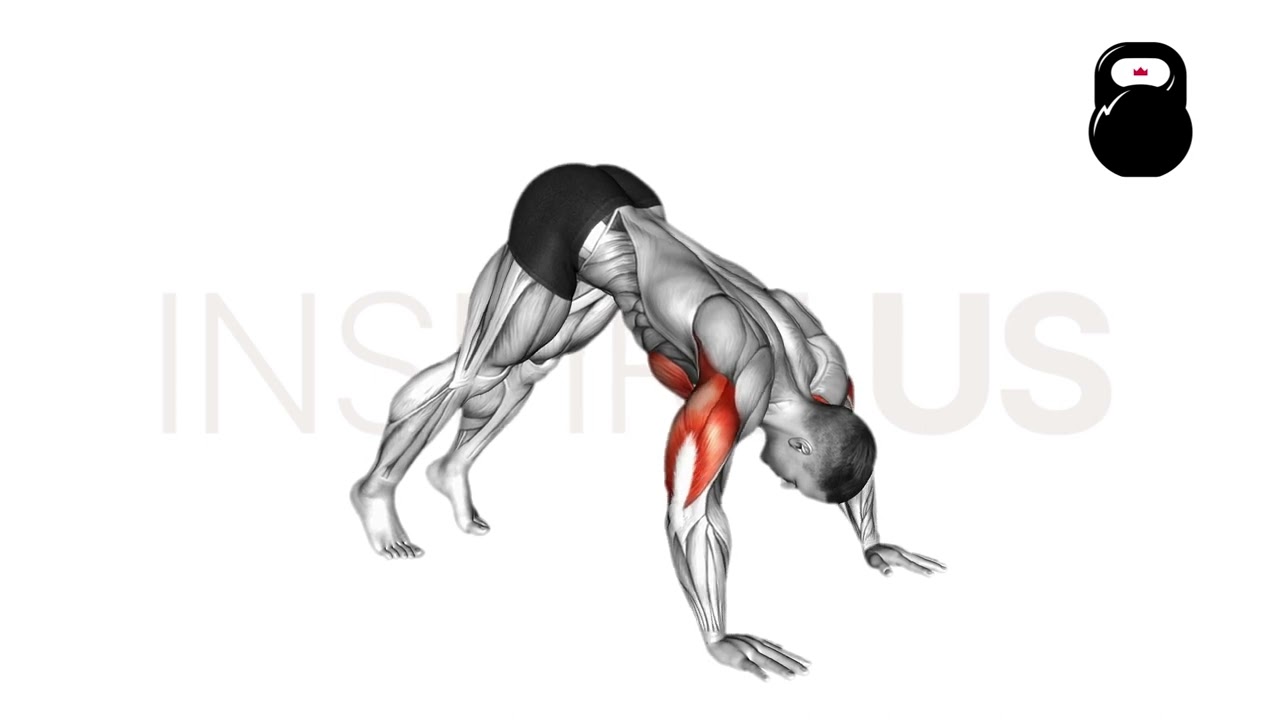Shoulder Push-Up: Benefits, Muscles Worked, and More
Shoulder push-ups are essentially a conventional push-up performed with the hips raised higher than the torso, forming a triangular shape with the entire body when viewed from the side.
While shoulder push-ups are most often employed to target the anterior deltoid muscles to a greater degree, they do offer further utility in the right context. Continue reading as we cover just that - as well as how to perform the exercise correctly and a few common mistakes to avoid.
What is a Shoulder Push-Up?
The shoulder push-up is a traditionally bodyweight closed chain compound exercise performed so as to strengthen the anterior deltoids and pectoralis muscles.
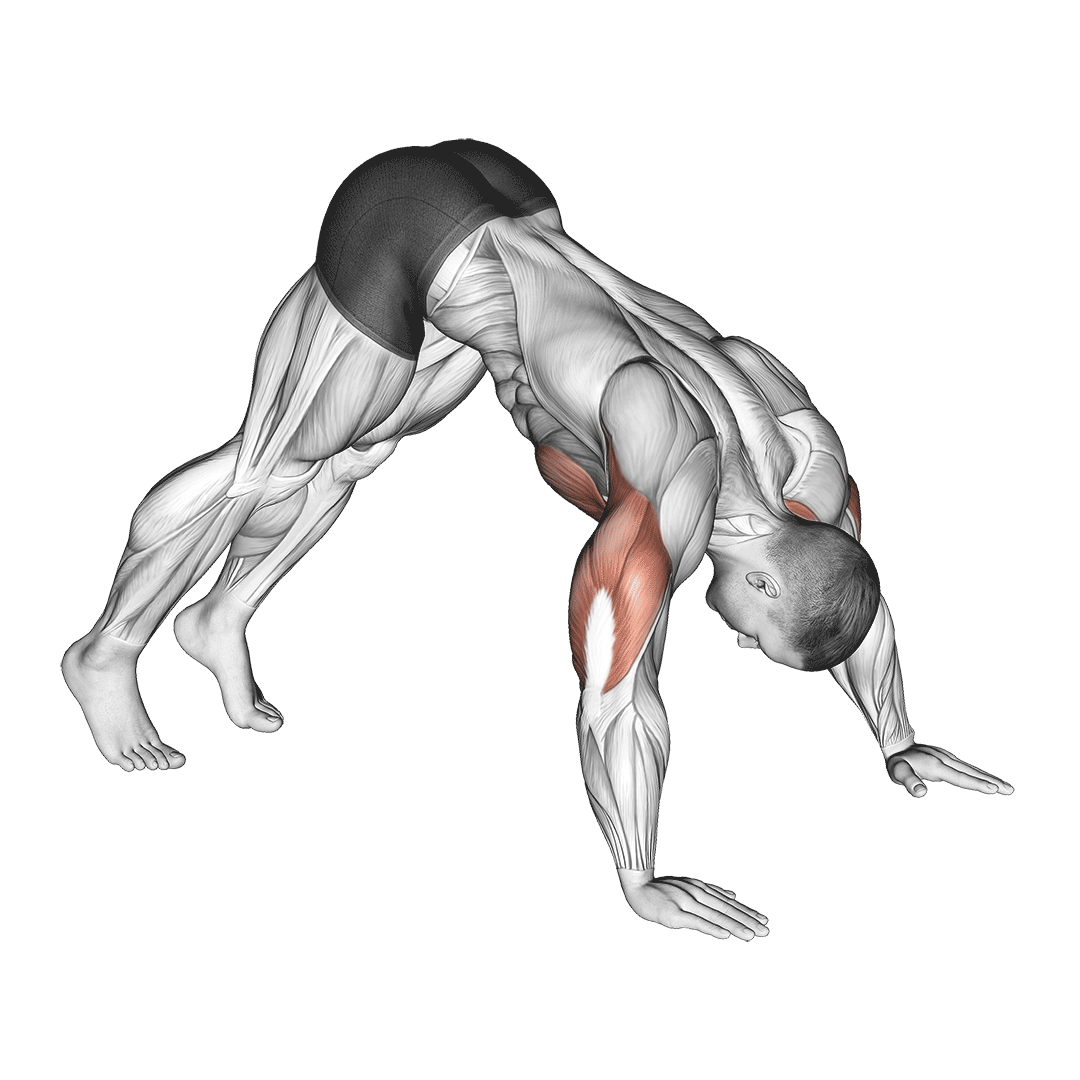
Shoulder push-ups are most often performed for moderate to high volume per set, as the resistance is non-adjustable outside of using equipment like weighted vests or resistance bands.
Fortunately, the majority of novice or intermediate calisthenics athletes will find shoulder push-ups to be quite challenging when first attempting them.
In comparison to conventional push-ups, shoulder push-ups are considerably more difficult, require greater technical skill and will challenge muscle groups like the deltoids and pectoralis muscles more than the conventional variation.
However, these advantages come at the trade-off of a shorter range of motion, slightly greater risk of injury and less effective lower chest recruitment.
Are Shoulder Push-Ups Right for You?
Although shoulder push-ups are no more dangerous than a regular push-up, they are somewhat more challenging and as such are more appropriate for individuals with at least a few months of bodyweight training under their belt.
However, individuals with a history of shoulder, lower back or elbow issues should avoid shoulder push-ups. The general downward pressure created by the position and execution of the movement can irritate these areas or cause a resurgence in symptoms.
How to do Shoulder Push-Ups
To perform a repetition of the shoulder push-up, the exerciser must first enter a standard push-up stance with their hands slightly wider than shoulder-width apart, feet set close together and lower back neutral.
From this position, the exerciser will hinge at the hips and raise them into the air, pushing their glutes out while ensuring the lower back remains flat. When viewed from the side, the body should create the shape of a triangle, with the head aligned with the upper back and the legs fully locked out.
In this pike position, the exerciser then bends at the elbows and lowers their upper body towards the ground - stopping once their head is about to touch the floor.
Having completed the eccentric portion of the movement, the exerciser then drives through their palms and pushes their torso away from the floor. This should return them to the original pike position at the start of the repetition.
Once back in the pike position, the repetition is considered complete.
What Muscles are Worked by Shoulder Push-Ups?
Shoulder push-ups are a compound exercise, meaning that more than a single muscle group is worked throughout its movement pattern. In order to understand which muscles benefit the most from this, we must separate them according to the manner in which they contract.
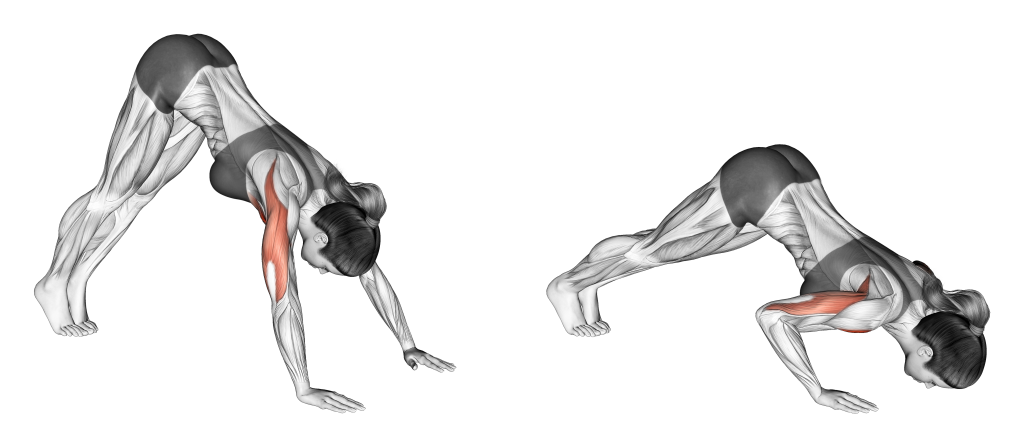
“Mover” or “mobilizer” muscles are those that exhibit dynamic contraction, whereas “stabilizer” muscles show isometric contraction and therefore receive less benefit than the mover muscles.
Mover Muscles
During a repetition of shoulder push-ups, the main muscles involved are the anterior deltoids, triceps brachii and the upper section of the pectoral muscles.
These muscles exhibit a significant range of movement as the movement is performed, and as such will receive the most benefit as well.
In comparison to conventional push-ups, the largest change is the shift towards a more deltoid-driven movement, rather than a chest-driven one. Although the overall range of motion is shorter, the deltoids themselves are worked to a greater degree as a result of the different torso orientation.
Stabilizer Muscles
Apart from the mover muscles, the muscles of the latissimus dorsi, remaining deltoid heads, abdominals, obliques, erector spinae and other deep lower back stabilizers are all contracted as well.
What are the Benefits of Doing Shoulder Push-Ups?
Shoulder push-ups are particularly effective for achieving the following benefits in your workout.
Develops Upper Pushing Muscles
The main advantage to performing shoulder push-ups is its capacity to build the push muscles of the upper body - especially those of the deltoids.
The triceps, pectorals and the aforementioned deltoids are all worked to a high level of intensity with each repetition of the shoulder push-up.
For the best results, aim to focus on time under tension with each repetition, as the overall range of motion is somewhat short. A moderate volume set with sufficient time under tension can more than exceed a regular set of push-ups, even despite a smaller ROM.
Helps Emphasize Deltoids Without Equipment
A major issue that many calisthenics athletes face is a lack of deltoid isolation exercises in their repertoire. This can lead to imbalances within the muscle group itself, often with the anterior deltoid being significantly larger and stronger than the medial or posterior heads of the muscle group.
For bodybuilders or other disciplines of resistance training, the solution is to simply perform movements like rear delt flys or lateral raises to correct the issue. However, strictly bodyweight athletes don’t have access to this sort of training.
Fortunately, shoulder push-ups are one way to help target the deltoids without other muscles like the pectorals or lats overpowering them.
Targets Core Effectively
Like most other push-up variations, the shoulder push-up also recruits the core musculature to a highly effective degree.
This is a result of the inverted V pose that the shoulder push-up is performed in, requiring contraction of not only the abdominal muscles but also the spinal erectors and obliques in order to maintain proper form.
Can Be Modified For Greater Range of Motion
Although a major drawback of the shoulder push-up is that it does not feature the same range of overall movement that other types of push-up do, a greater ROM can easily be achieved by simply modifying the exercise.
This modification is otherwise known as a decline shoulder push-up, and simply requires that the exerciser elevate their feet atop a bench or block so as to raise the rest of the body further away from the floor.
In turn, greater contraction of the triceps and chest is achieved - and a generally longer length of time under tension.
Of course, modifying the exercise in this manner will also make it more difficult from both a muscular and technical standpoint. Ensure that you have already mastered the shoulder push-up in its basic form before switching over to decline shoulder push-ups.
Acts as Natural Progression to Handstand Push-Ups
Finally, calisthenics athletes wishing to one day master the handstand push-up will find that movements like the shoulder push-up are required as a method of progressing to their goal.
It is unlikely a novice or intermediate athlete will be able to jump straight from regular push-ups to unsupported handstand push-ups, as you can probably guess.
Depending on the recovery, diet and proficiency of the athlete, one can expect to follow the general trend of starting with conventional push-ups, progressing to shoulder push-ups and finally attempting wall supported handstand push-ups once they can perform multiple repetitions of shoulder push-up.
This will not only ensure that the body is given sufficient time to strengthen itself for a handstand push-up, but also outline any potential physiological issues or form errors that may lead to injury when doing so.
Common Shoulder Push-Up Mistakes to Avoid
In order to get the most out of a set of shoulder push-ups, ensure the following mistakes are not present in your performance.
Descending Too Rapidly
As mentioned previously, because shoulder push-ups are somewhat short as far as range of movement goes, it is important to maximize the length of time in which the muscles are under tension during each repetition.
Performing shoulder push-ups too rapidly goes against this, and can potentially lead to injury of the head or even an overall breakdown in form.
Aim to slow down the descending (eccentric) portion of the movement by at least 1-2 seconds, focusing on fully contracting the deltoids and maintaining tension throughout the upper body.
Hands Set Too Far Apart
Those with difficulty maintaining their balance during shoulder push-ups may find themselves naturally adopting a wider hand placement.
While doing so will indeed help with balance, it further shortens the range of motion and can create greater strain on the elbows if additional flaring also occurs.
In order to maximize the effectiveness of the movement and protect the elbows, the exerciser should keep the hands around shoulder-width apart. The elbows should not be parallel to the shoulders at the apex point of the movement, but may be in front of immediately beneath them at the start.
Rounding the Lower Back
Exercisers unfamiliar with inversion exercises or shoulder push-ups themselves may find achieving a flat lower back difficult, leading to rounding and a generally poor stance overall.
As much as possible, the body should form a triangular shape with the hips forming the tip of the triangle. This means ensuring that the lower back is relatively flat and neutral, with the rest of the torso extending beneath it in a diagonal line.
Rounding the lower back can create unnecessary strain at the spine and the deep spinal erector muscles supporting it.
To avoid sustaining these injuries, aim to properly brace the core and perform a lower back mobility stretch prior to performing shoulder push-ups. Furthermore, practice maintaining proper shoulder push-up form while facing perpendicular to a mirror so as to ensure that the lower back is truly flat.
Failing to Breathe/Excessive Valsalva
One risk unrelated to stance or ROM is that of breathing incorrectly during a shoulder push-up.
Because of the inverted position and difficulty involved, exercisers with problems related to low blood pressure may find that they become dizzy or can even lose consciousness as they perform the exercise.
This is a major injury risk, and as much as possible we advise that you refrain from performing shoulder push-ups if you are susceptible to this issue.
However, if you have been medically cleared or otherwise do not have issues related to blood pressure, then it is likely an issue with excessive bracing and poor breathing technique.
Inhale slowly as you descend towards the floor, focusing on keeping intra-abdominal pressure as you do so. Don’t forget to also slowly exhale as you push away from the ground.
Pressing the Head Into the Floor
One form mistake seen in even experienced athletes is touching the top of the head to the floor during the apex of the movement.
Although this is unlikely to result in injury to the head, it does cause some of the body’s weight to be distributed through the neck and into the floor - creating a risk of cervical spine injury and possibly releasing tension in the muscles of the upper body.
To maintain tension in the muscles, aim to stop at a point where the head is just shy of touching the ground. Avoid actually making contact with the floor.
Shoulder Push-Up Alternatives and Variations
If shoulder push-ups aren’t quite what you need in your bodyweight routine, try the following alternative push-up variations out.
Wide Push-Ups
Wide push-ups are simply conventional push-ups performed with a significantly wider than shoulder-width hand placement.
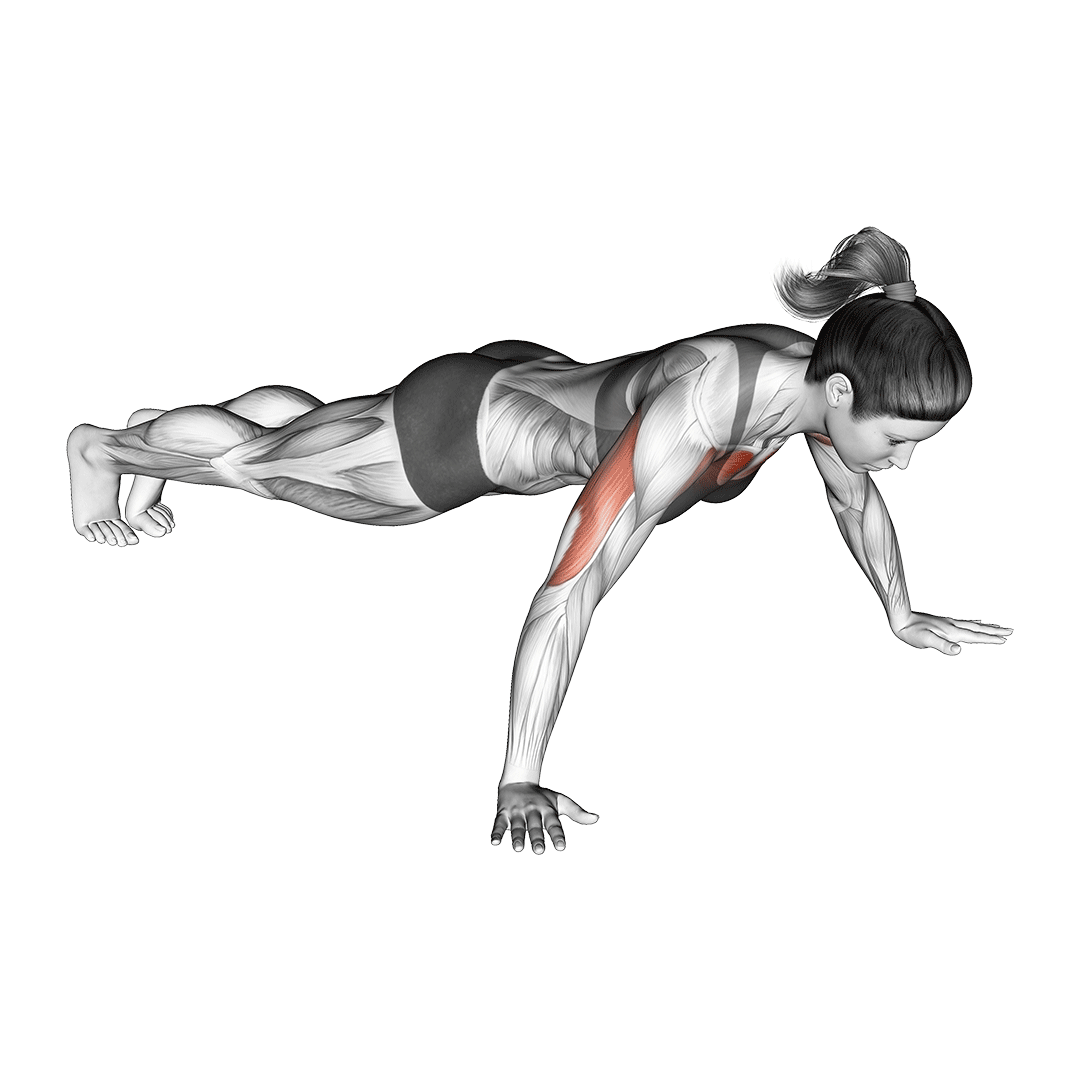
Although not focused on the deltoids in the same manner as shoulder push-ups, wide push-ups allow for a similar emphasis on upper pectoral contraction to occur. Use them when conventional or shoulder push-ups aren’t enough to develop your chest.
Decline Shoulder Push-Ups
To intensify regular shoulder push-ups and maximize range of motion, perform the exercise with the feet elevated atop a bench or block. This creates a greater decline angle and raises the torso further away from the floor - creating an overall more effective and comprehensive movement.
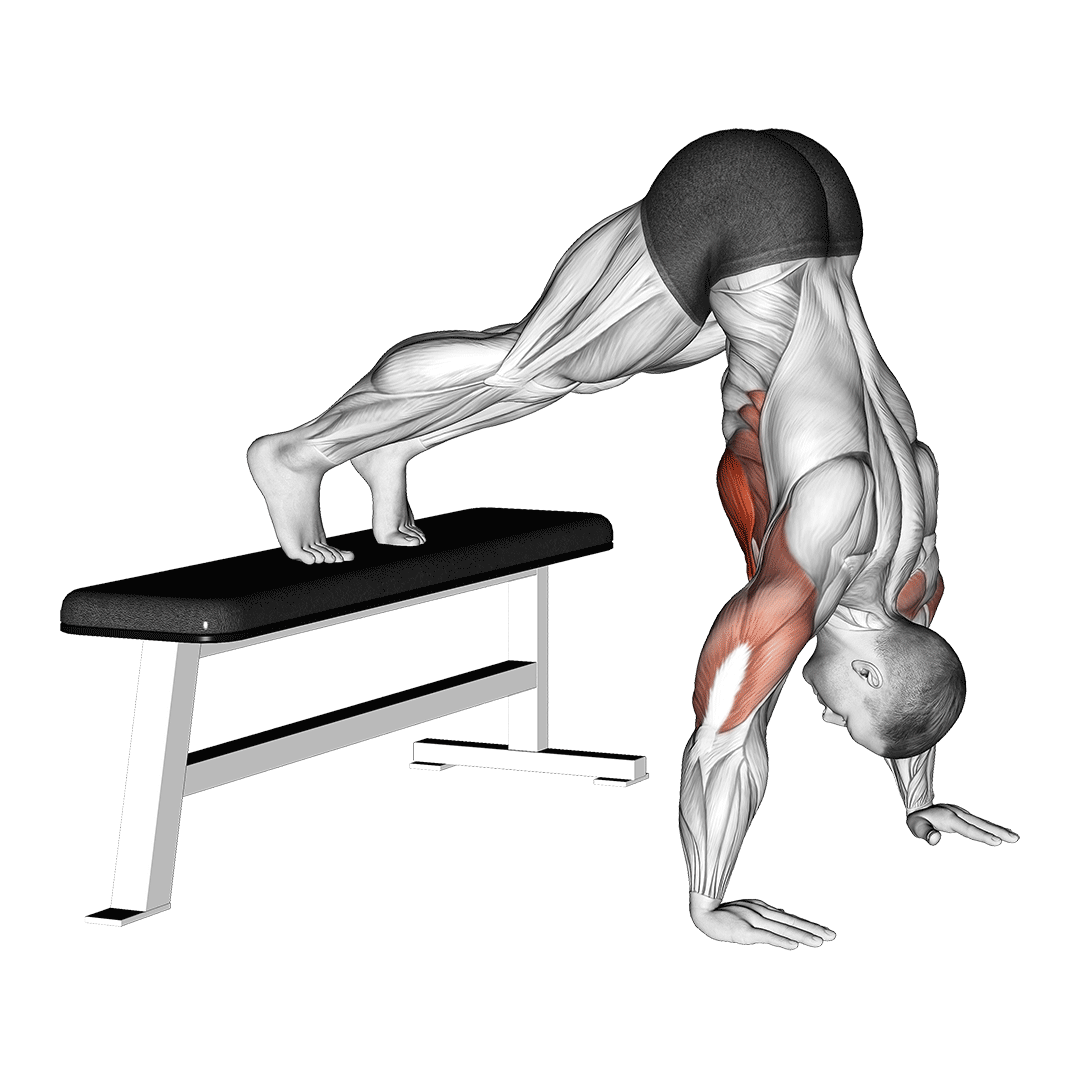
Once you’ve mastered conventional shoulder push-ups, switch to the decline variation as a form of progression.
Shoulder Tap Push-Ups
Shoulder tap push-ups are an advanced variation of conventional push-up where the lifter raises one hand and taps the shoulder on the opposite side after completing a full push-up repetition. This builds even greater core stability and is excellent as a progression movement to one-handed push-ups.
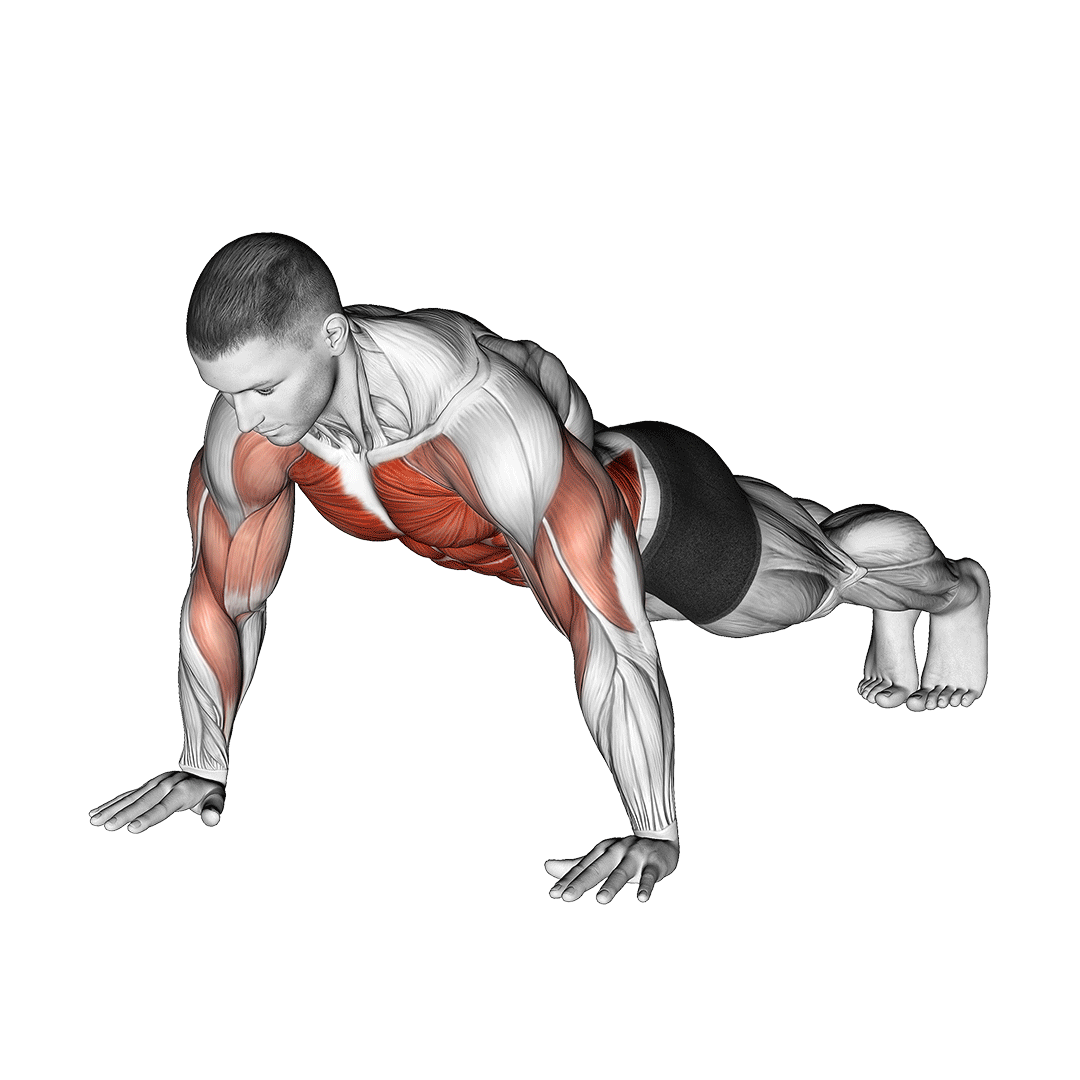
As a shoulder push-up alternative, the shoulder tap variation is best used if stability in the pike position is an issue - or if greater isometric contraction of the triceps, deltoids and stabilizer muscles is your goal.
Frequently Asked Questions (FAQ)
Are Shoulder Push-Ups Safe?
Yes - shoulder push-ups are entirely safe, so long as proper form is followed. Make sure your spine remains neutral and that you avoid flaring your elbows out to the sides excessively as you perform the exercise.
Why do My Shoulders Hurt When I Do Push-Ups?
Shoulder pain from conventional push-ups can be a sign that your hand placement is incorrect or that you are rotating your shoulders incorrectly as the repetition is performed.
To diagnose these issues, first stop performing exercises involving your shoulders and take time off to recover. After sufficiently recovered, ensure your hands are placed parallel to your shoulders, that your elbows are not flaring and that your shoulders do not rotate inwards as you push off the floor.
What Push-Up is Best for the Shoulders?
The shoulder push-up, pike push-up and handstand push-up are all excellent push-up variations for building your shoulder muscles. Each one involves a semi-inverted or fully inverted bodily orientation, forcing the deltoids to work harder and leveraging more of the body’s weight against them.
Final Thoughts
Once you’re able to perform numerous conventional push-ups in a single set, it’s a pretty good idea to branch out and start trying more advanced variations.
The shoulder push-up is an excellent option - but keep in mind that it trades greater deltoid training for lesser pectoral contraction. Try performing parallel bar or ring dips alongside the shoulder push-up for a more comprehensive upper body push workout.
References
1. Kim YS, Kim DY, Ha MS. Effect of the push-up exercise at different palmar width on muscle activities. J Phys Ther Sci. 2016 Jan;28(2):446-9. doi: 10.1589/jpts.28.446. Epub 2016 Feb 29. PMID: 27064571; PMCID: PMC4792988.
2. Kowalski KL, Connelly DM, Jakobi JM, Sadi J. Shoulder electromyography activity during push-up variations: a scoping review. Shoulder Elbow. 2022 Jun;14(3):326-340. doi: 10.1177/17585732211019373. Epub 2021 Jun 6. PMID: 35599715; PMCID: PMC9121296.

